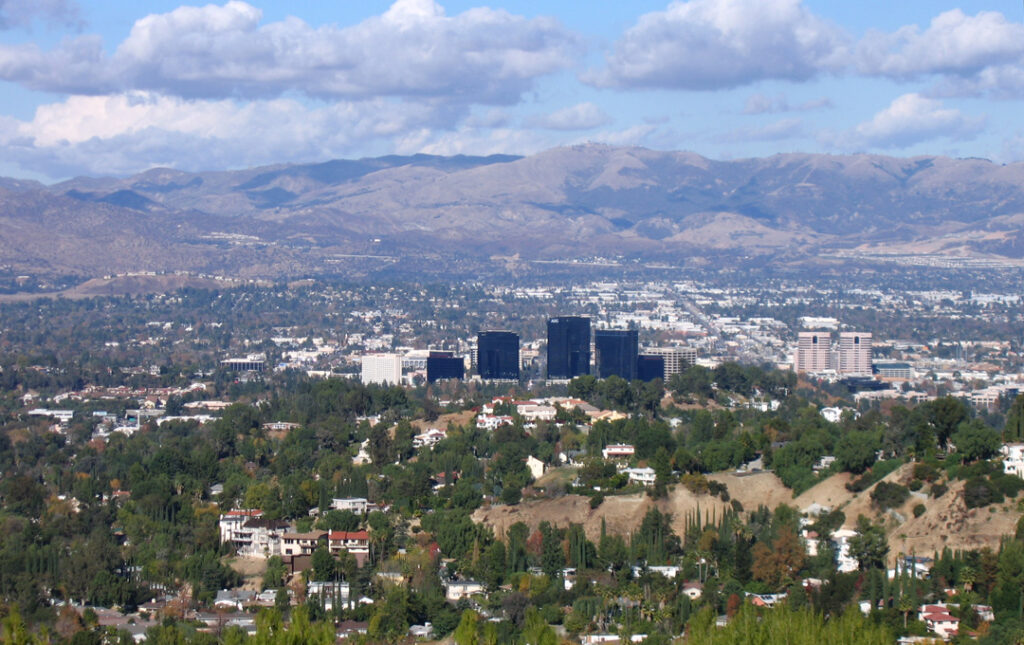
Moving to Woodland Hills, California: A Comprehensive Relocation Guide
Considering moving to Woodland Hills, California? Nestled in the southwest corner of the San Fernando Valley, Woodland Hills offers a sophisticated suburban lifestyle with scenic mountain views, excellent shopping, and convenient access to both Los Angeles and the coast. This 2025 relocation guide explores everything you need to know before making the move.
Demographic Profile to Consider If Moving to Woodland Hills:
Woodland Hills is a neighborhood within the city of Los Angeles located along U.S. Route 101 near the Santa Monica Mountains. The area’s population exceeds 70,000 residents and attracts professionals, families, and retirees who value suburban comfort with urban access. The community features tree-lined streets, upscale neighborhoods, and a growing mix of modern apartments. Average household income is higher than the Los Angeles average, reflecting its professional workforce and quality of life. Find trusted local services for moving, living, and working in Woodland Hills.Woodland Hills Relocation Directory
Cost of Living to Consider If Moving to Woodland Hills:
In 2025, Woodland Hills maintains a high cost of living compared with most parts of Los Angeles County, primarily due to real estate. Median home prices approach $1.2 million, while rentals average $2,700–$3,500 per month. The area’s appeal lies in its safety, spacious homes, strong schools, and proximity to job hubs in Warner Center, Burbank, and Santa Monica.
Economy and Job Market:
Woodland Hills anchors the western end of the San Fernando Valley’s economy. Warner Center serves as a key business district, hosting companies in finance, healthcare, technology, and insurance. Major employers include Kaiser Permanente, Farmers Insurance, and aerospace and entertainment firms throughout the Valley. The area’s business growth continues to expand opportunities in 2025 with hybrid and remote positions common.
Education:
The Los Angeles Unified School District operates highly regarded schools in Woodland Hills, including El Camino Real Charter High School and Taft Charter High School. Several private and charter schools serve the area as well. Pierce College provides local higher-education access, while nearby institutions include California State University Northridge (CSUN), Pepperdine University, and UCLA.
Recreation and Lifestyle:
Woodland Hills offers abundant recreation and cultural amenities. Residents enjoy Topanga State Park, the Woodland Hills Recreation Center, and proximity to beaches via Topanga Canyon Boulevard. The Westfield Topanga & The Village complex is one of the region’s top retail and dining destinations. Golf courses, yoga studios, and local farmers markets add to the area’s active lifestyle. Its blend of natural scenery and urban convenience makes it one of LA’s most desirable suburban communities.
Healthcare and Services:
Healthcare options are extensive, including Kaiser Permanente Woodland Hills Medical Center and Providence Cedars-Sinai Tarzana Medical Center. Numerous private practices and wellness centers serve residents throughout the district.
Transportation:
Woodland Hills is well-connected by the Ventura Freeway (U.S. 101) and served by LA Metro buses linking to the Orange Line, which connects to downtown Los Angeles and the Valley. Bike paths and canyon roads provide scenic alternatives, while nearby rail and future Metro expansion projects continue to enhance regional connectivity.
Conclusion:
Moving to Woodland Hills in 2025 offers an elevated suburban lifestyle with outstanding amenities, excellent schools, and access to beaches, mountains, and major job centers—perfect for families and professionals seeking both space and sophistication within Los Angeles.

